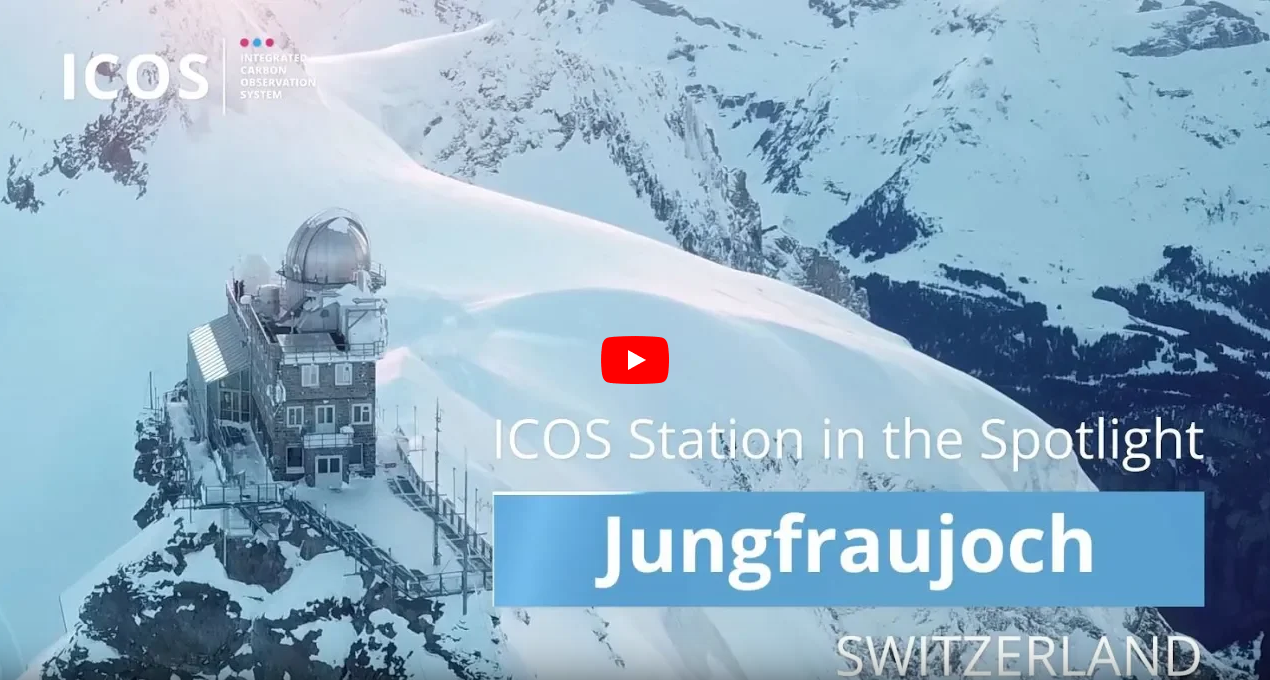The Jungfraujoch station was awarded the status of an ICOS Class 1 Atmosphere Station in May 2018 and is the highest measurement station in the ICOS network (3572 m a.s.l). Established in 1931, it has a long site history.
Measurements at Jungfraujoch station are jointly organized by the High Altitude Research Stations Jungfraujoch & Gornergrat, University of Bern, Swiss Federal Laboratories for Materials Science and Technology (Empa), Federal Office of Environment (FOEN) / National Air Pollution Monitoring Network (NABEL), Federal Office of Meteorology and Climatology MeteoSwiss, and the University of Basel.
The ICOS relevant measurement programme at Jungfraujoch is organised as follows:
- O2/N2 with paramagnetic sensor and fuel cell (University of Bern)
- CO2, CH4, CO with Cavity Ringdown Spectroscopy (Empa)
- 13C and 18O in CO2 with Quantum Cascade Laser Absorption Spectroscopy (Empa)
- 14C (radiocarbon 14-day integrated samples; chemical absorption in sodium hydroxide solution and off-line analysis by radioactive counting; University of Bern and ICOS Radiocarbon Laboratory)
- Meteorology (MeteoSwiss)
- Planetary boundary layer with ceilometer (Kleine Scheidegg; MeteoSwiss)
- 222Radon with two-filter dual loop alpha particle detection (University of Basel)
- N2O with off-axis Integrated Cavity Output Spectroscopy (Empa)
Meteorological advection patterns at Jungfraujoch are routinely determined with back-trajectory analysis and a Lagrangian particle dispersion model calculations by Empa.
Have a look at our link collection for more information related to the Jungfraujoch station.
